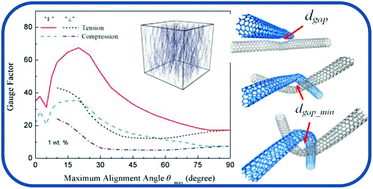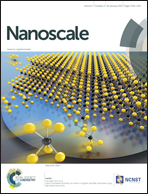Giant piezoresistivity in aligned carbon nanotube nanocomposite: account for nanotube structural distortion at crossed tunnel junctions†
Abstract
High piezoresistivity is critical for multifunctional carbon nanotube polymer composites with sensing capability. By developing a new percolation network model, this work reveals theoretically that a giant piezoresistivity in the composites can be potentially achieved by controlled nanotube alignment resulting from field based alignment techniques. The tube–tube and/or tube–matrix interaction in conjunction with the aligned carbon nanotube networks are fully considered in the newly proposed model. The structural distortion of nanotubes is determined self-consistently by minimizing the pseudo-potential energy at crossed-tube junctions based on the Lennard–Jones potential and simulation of coarse grain molecular dynamics. The tunneling transport through crossed-tube junctions is calculated by the Landauer–Büttiker formula with empirical fitting by first-principle calculation. The simulation results also reveal that the piezoresistivity can be further improved by using low carbon nanotube loadings near the percolation threshold, carbon nanotubes with a small aspect ratio, high intrinsic conductivity and polymers with a small Poisson's ratio. This giant piezoresistive effect offers a tremendously promising future, which needs further thorough exploration.


 Please wait while we load your content...
Please wait while we load your content...